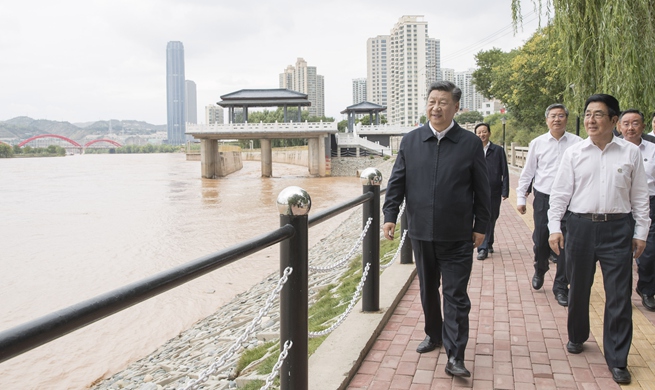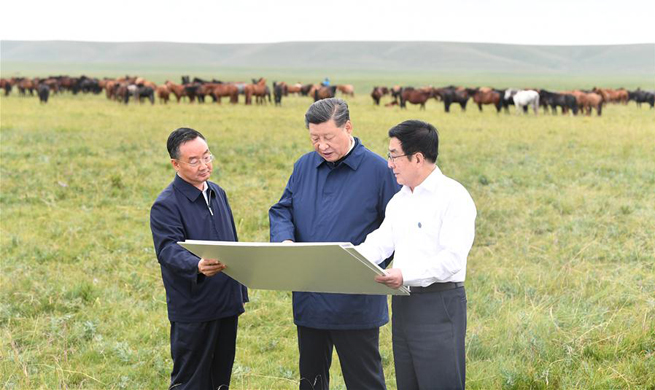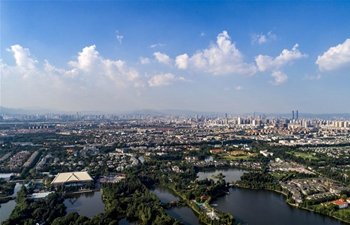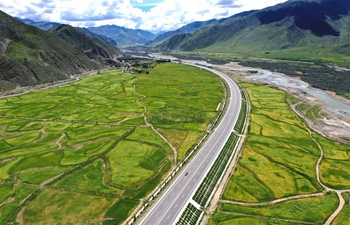BANGKOK, Aug. 22 (Xinhua) -- The sequence of natural disasters in Asia-Pacific over the past two years was beyond what the region had previously experienced, which is a sign to come in the new climate reality, according to a latest report by the United Nations Economic and Social Commission for Asia and the Pacific (ESCAP).
The Asia-Pacific Disaster Report 2019 launched on Thursday reveals that recent disasters, especially those triggered by climate change and environmental degradation, have deviated from their usual tracks and are growing in intensity, frequency and complexity.
In 2018, almost half of the 281 natural disaster events worldwide occurred in the region, including eight out of the 10 deadliest. An average of 142 million people in the region have been affected annually since 1970, well above the global average of 38 million, the report said.
For the first time, the Asia-Pacific Disaster Report includes the costs of slow-onset disasters, notably drought which results in a quadrupling of annual economic losses as compared to previous estimates.
The annual economic loss for Asia-Pacific is now 675 billion U.S. dollars, or around 2.4 percent of the region's GDP, of which 405 billion dollars or 60 percent are drought-related agricultural losses, impacting the rural poor disproportionately, the report noted.
"Countries across the region have committed themselves to the Sustainable Development Goals (SDGs) by 2030 to ensure that no one is left behind. But they cannot achieve many of the SDG targets if their people are not protected from disasters that threaten to reverse hard-won development gains," said United Nations Under-Secretary-General and Executive Secretary of ESCAP Armida Alisjahbana at the report launch in Bangkok.
"This means not just building resilience in the priority zones but doing so across the entire region, reaching the most marginal and vulnerable communities," she added.
Vulnerable and marginalized communities are among the hardest hit by disasters in the region while projected number of people living in extreme poverty by 2030 could double to 123 million.
"This is not inevitable. Governments can break this vicious cycle by investing to outpace disaster risk and the report shows that investments will be far smaller than the damage and losses from unmitigated disasters," said Alisjahbana.
The report calls for transformative change, with social policies and disaster resilience no longer treated as separate policy domains.
It also highlights how policymakers can enhance the quality of investments through policy reforms for more inclusive and empowered societies.
Similarly, the report explores how emerging technologies such as big data and digital identities can be used to ensure the poorest and most vulnerable groups are included in policy interventions.
The report also points out that many of the region's disaster hotspots extend across national boundaries and proposes a set of regional policy actions to be implemented through the Asia-Pacific Disaster Resilience Network, supported by ESCAP.
The Asia-Pacific Disaster Report is a bi-annual flagship publication of ESCAP which aims assist policymakers, in both public and private sectors, to better understand disaster risk and resilience and take the many opportunities for action.

















